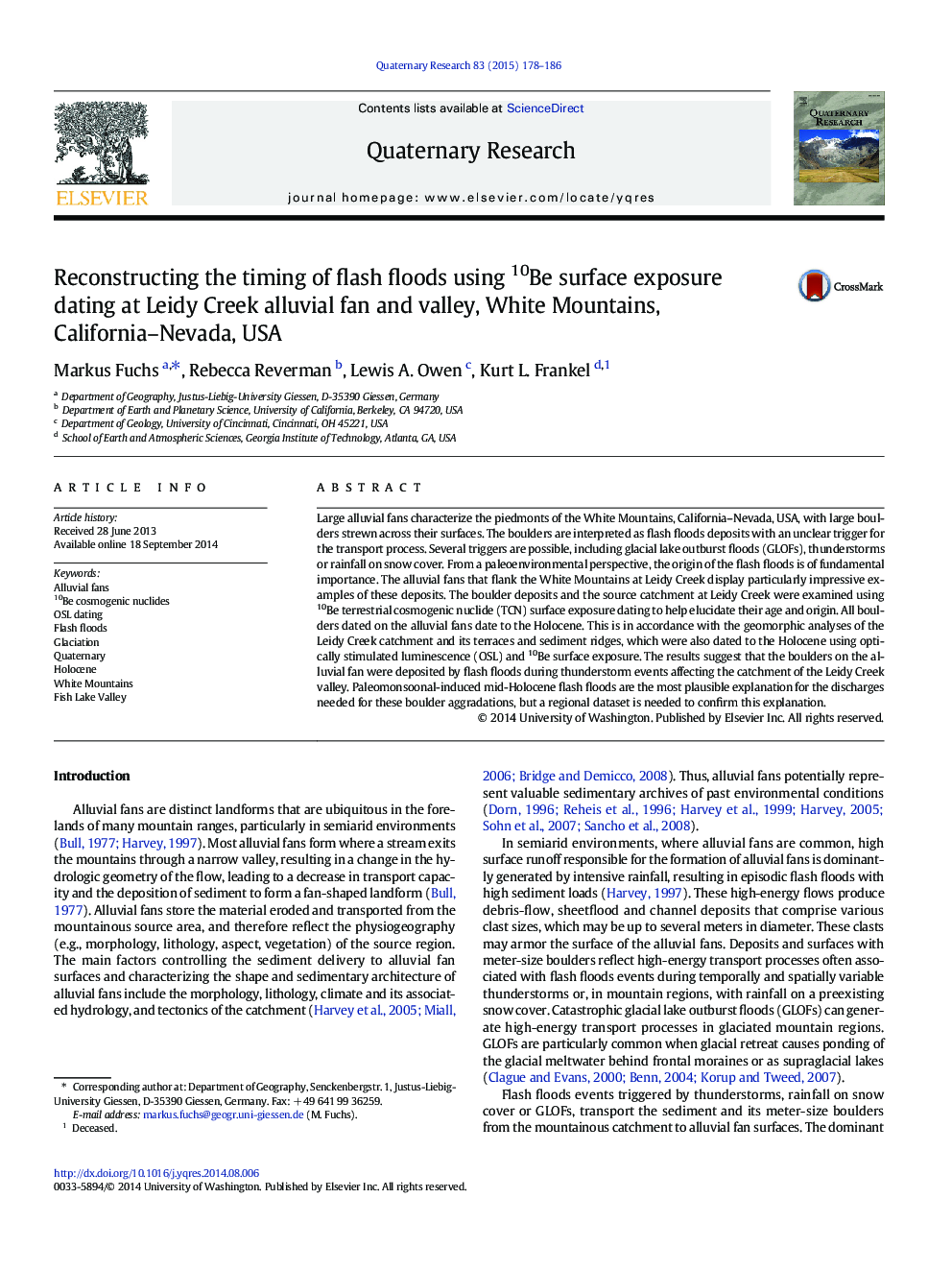| Article ID | Journal | Published Year | Pages | File Type |
|---|---|---|---|---|
| 1045193 | Quaternary Research | 2015 | 9 Pages |
Large alluvial fans characterize the piedmonts of the White Mountains, California–Nevada, USA, with large boulders strewn across their surfaces. The boulders are interpreted as flash floods deposits with an unclear trigger for the transport process. Several triggers are possible, including glacial lake outburst floods (GLOFs), thunderstorms or rainfall on snow cover. From a paleoenvironmental perspective, the origin of the flash floods is of fundamental importance. The alluvial fans that flank the White Mountains at Leidy Creek display particularly impressive examples of these deposits. The boulder deposits and the source catchment at Leidy Creek were examined using 10Be terrestrial cosmogenic nuclide (TCN) surface exposure dating to help elucidate their age and origin. All boulders dated on the alluvial fans date to the Holocene. This is in accordance with the geomorphic analyses of the Leidy Creek catchment and its terraces and sediment ridges, which were also dated to the Holocene using optically stimulated luminescence (OSL) and 10Be surface exposure. The results suggest that the boulders on the alluvial fan were deposited by flash floods during thunderstorm events affecting the catchment of the Leidy Creek valley. Paleomonsoonal-induced mid-Holocene flash floods are the most plausible explanation for the discharges needed for these boulder aggradations, but a regional dataset is needed to confirm this explanation.
